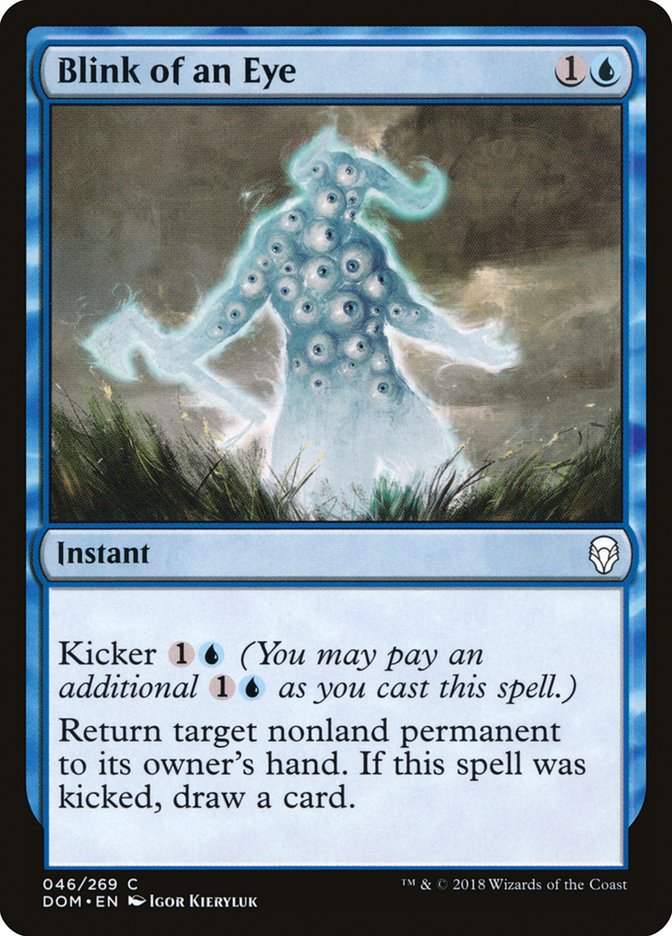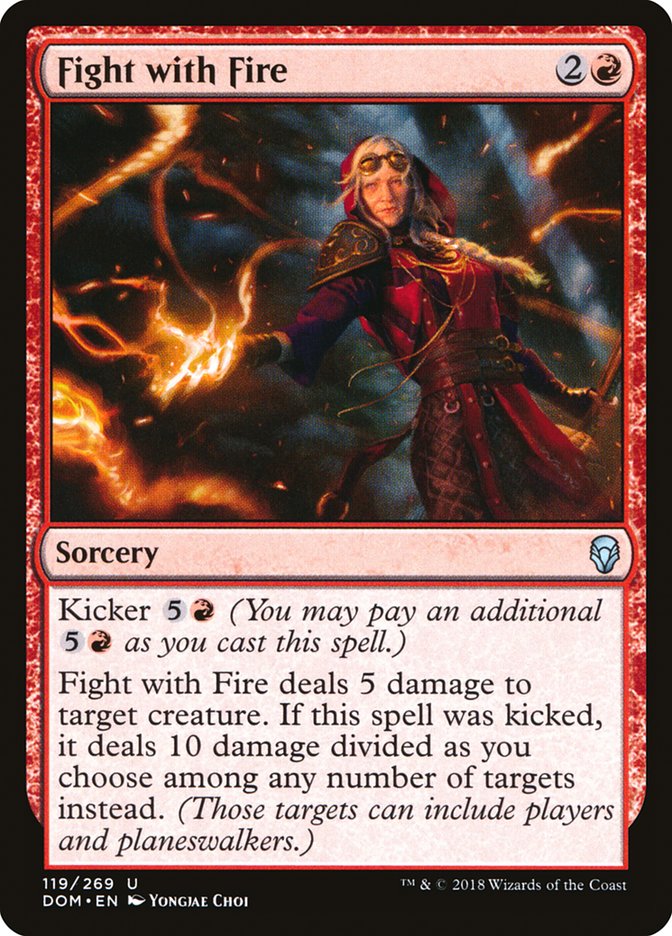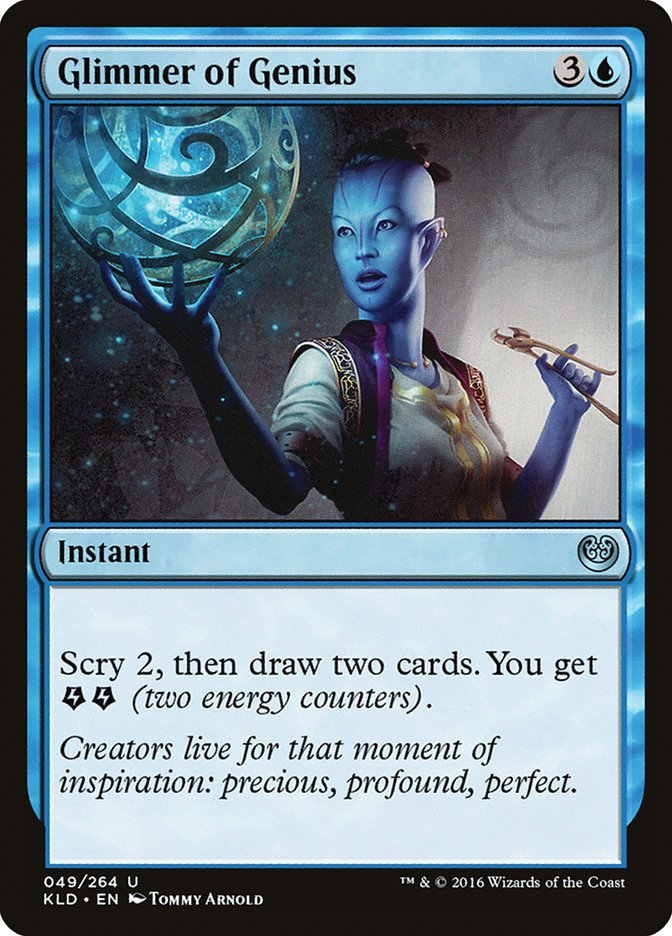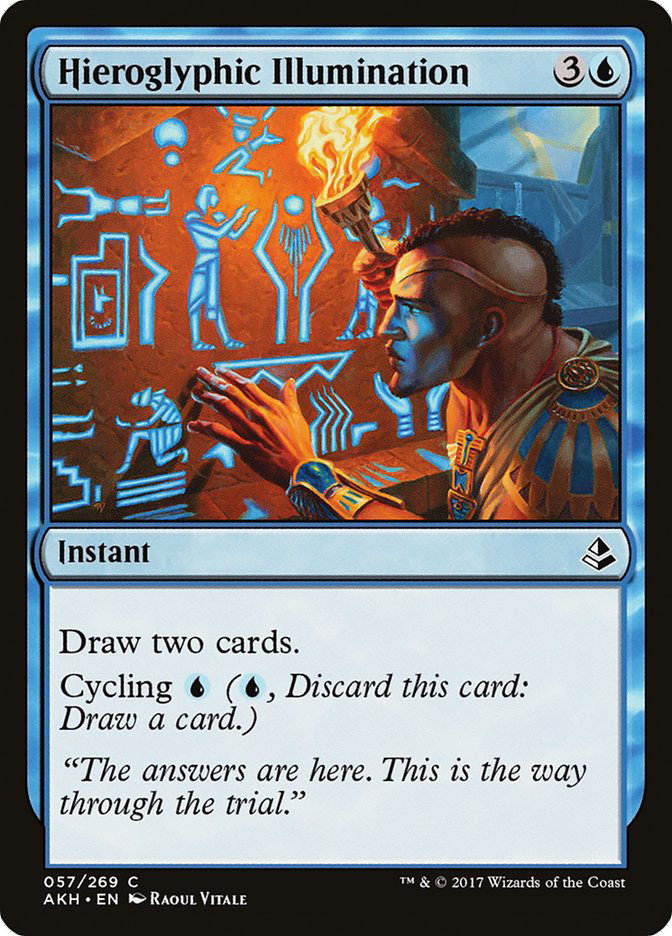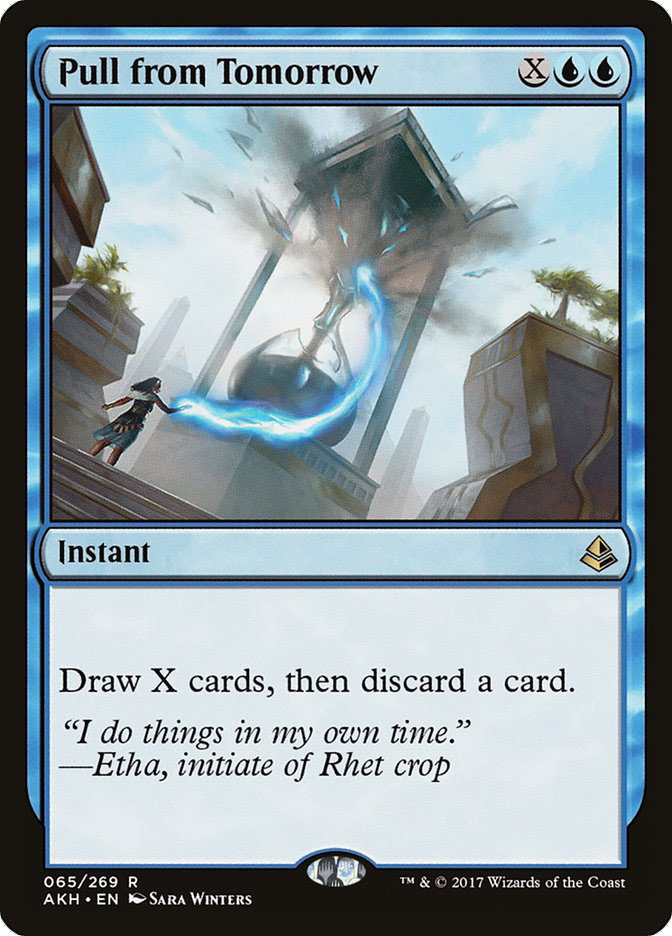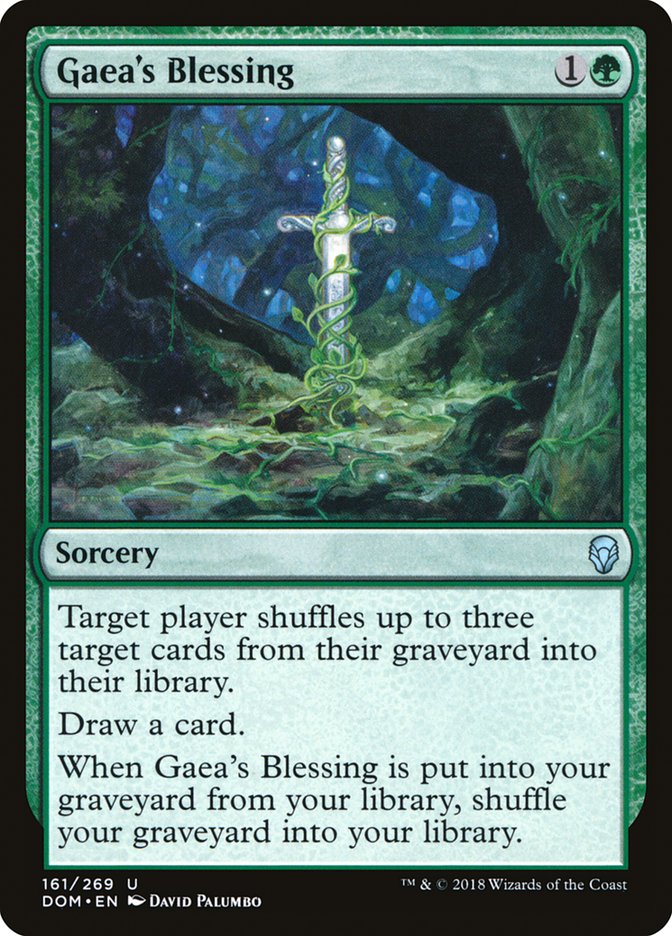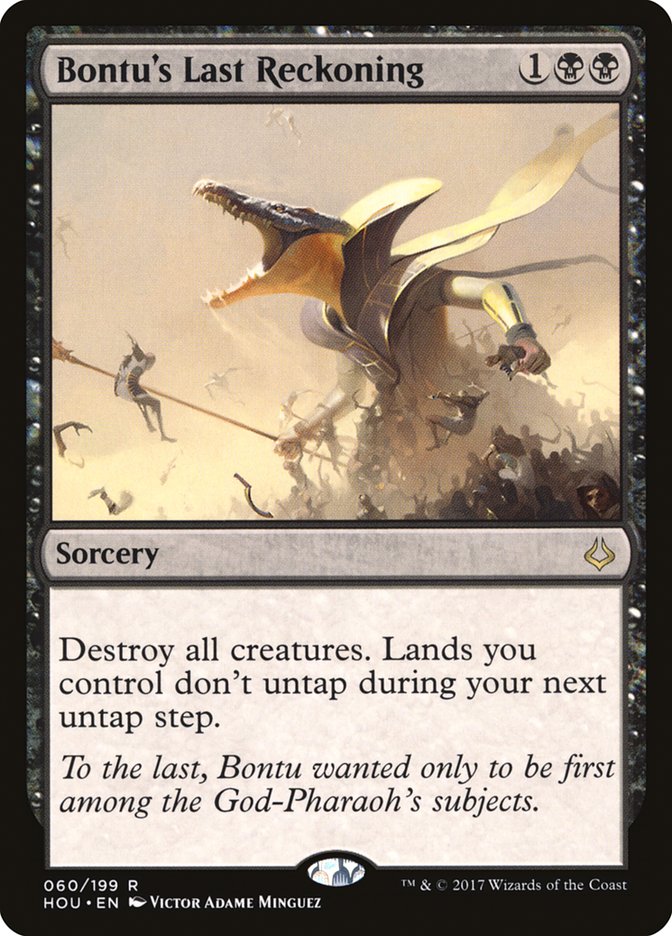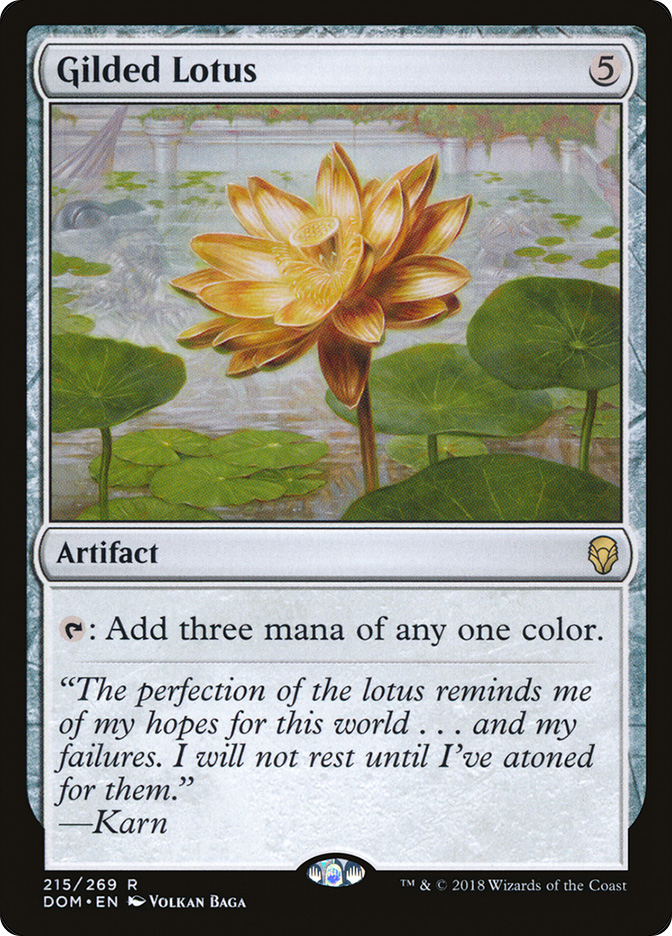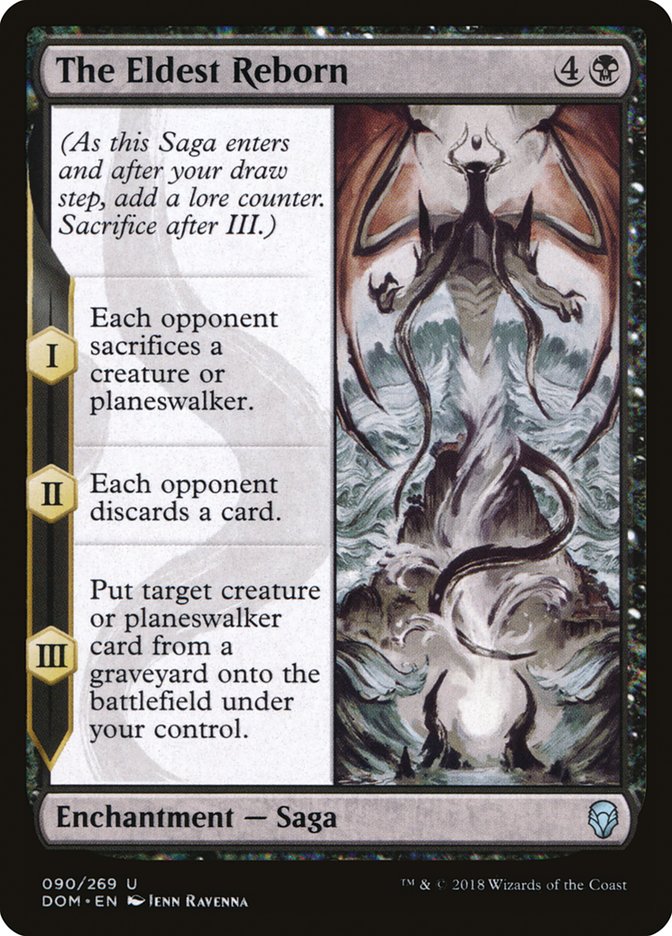Watching coverage of GP Birmingham, I was really impressed by Leo Lahonen’s
U/W Control deck:
Planeswalkers (5)
Lands (27)
Spells (28)

I love the move away from creatures, as blanking the opponent’s removal is
great in this format. I’d been playing decks that focused on doing this,
but I went further, and tried to blank Vraska’s Contempt by not playing
planeswalkers either. After trying a few configurations, I settled on The
Mirari Conjecture loops with Blink of an Eye that eventually killed by
copying and/or rebuying Fight with Fire.
I like the value The Mirari Conjecture generated, and I liked that the
Fight with Fire kill just required playing one or two copies of a mediocre
removal spell to give my deck a win condition. What I didn’t like was how
much harder I had to work to get my card advantage than I would if I were
just playing Teferi. When your deck is all reactive spells and you’re
looping The Mirari Conjecture, chapter three doesn’t actually do anything
for you most of the time, and when you’re returning Blink of an Eye with
chapter one, you’re basically just spending nine mana to draw a card and
add Commit to your hand every few turns. That’s not bad, but if
your opponent isn’t doing anything, it doesn’t really get you anywhere; you
just end up with a full hand and discarding a lot.
Okay, none of that’s really a problem because at that point it’s pretty
hard for you to lose. The real problem is that it costs five mana, doesn’t
give you two back, doesn’t impact the battlefield immediately, and requires
further mana to generate any material advantage. What this means is that it
can’t catch you up when you’re behind and it’s a lot harder to set up.
This might be a decent option to keep in your back pocket in case the
format moves to a point where Sorcerous Spyglass on Teferi, Hero of
Dominaria becomes a common problem for U/W Control, but with the format as
it is, the power and flexibility of Teferi makes it a much better option as
the top end of a control deck.
The other major departure in Leo’s deck compared to other control decks is
the absence of Glimmer of Genius and Hieroglyphic Illumination, relying on
Teferi, Search for Azcanta, and Pull from Tomorrow for card advantage
instead. I think the premise here is that the reason these draw twos were
so good was the interaction with Torrential Gearhulk, and once you decide
that Torrential Gearhulk isn’t what you want to be playing, those cards
lose a lot of value and Pull from Tomorrow can do a lot more work to pull
you ahead, where going up a single card might not matter enough.
Against aggro and midrange decks, this makes perfect sense to me. We want
to trade off every card we draw with a card of theirs for as long as
possible, we don’t want to have to take time off every few turns to pull a
little further ahead, and then, once we’re out of interaction, we want to
use our last card to draw an entire new handful of cards, at which point we
should essentially be able to declare victory.
I’m much more skeptical of this approach against other control decks. It
can be a lot harder to resolve a single big Pull from Tomorrow because it
costs more mana to get enough of an effect to matter, and if your opponent
wants to fight your card advantage, they just don’t need to stop very many
cards. As constructed, I think Leo was able to get away with this in
control mirrors because he had advantages in other places, specifically,
not having creatures, so his Essence Scatters would be live while his
opponents’ would be dead, so equity lost in the matchup by the choice of
card draw spell may be made up for in other parts of deck construction.
If the format moves to a place where control decks need to be more
concerned with beating each other, this might be more of a problem, but it
seems good for the aggro heavy metagame we saw at GP Birmingham, with the
minor asterisk that it’s also a bit weaker against Duress.
I’m generally not one to suggest adding a color to decks–I love playing
the lowest number of colors I can get away with and my inclination to even
consider this probably says that I came up in a different age, but what I
want to do as the next step with this is splash for Gaea’s Blessing.
This should probably sound a little crazy, even if you understand Gaea’s
Blessing’s role in control decks historically, you may think that I must
fundamentally not understand the Teferi kill to even suggest such a thing
when the deck already has such format inevitability. I get that and my
concern isn’t to avoid decking myself. What I’m looking for is an edge in
control mirrors, and I’ve found that that kind of thing can often come down
to just lining up raw numbers of hard counters and meaningful threats, but
with Gaea’s Blessing, you don’t have to protect every Disallow as though
you may ultimately run out, you can just loop the ones you have forever,
gradually increasing the quality of your deck as if you’re playing
Dominion
.
You might point out that your opponent can just counter your Gaea’s
Blessing, so it’s not really changing that fundamental dynamic, and while
that’s true, it’s a two mana spell instead of a five+ mana spell that
forces the fight, and you can also do things like use Search for Azcanta to
mill it and trigger the reshuffle (that trigger can be Disallowed, but now
you’re generating a fight that didn’t cost you a card or any mana).
As a starting point, I’d want to trust Leo’s deck as much as possible, but
I want to try Gaea’s Blessing. As to how I’d make room for it, I
fundamentally don’t understand Gideon of the Trials. I might be missing
something, but I don’t know why it’s in the deck. My first instinct is to
cut that and a Teferi, but I could see cutting a Blink of an Eye instead of
a Teferi. I’m also tempted to play a Glimmer of Genius over one Pull from
Tomorrow, but I’d want to start by trying out Pull from Tomorrow, since I
have a lot less experience with it.
Planeswalkers (3)
Lands (27)
Spells (30)

Adding a color is never free, and this might not be worth it, but it also
might be the easiest way to substantially escalate the control deck’s arms
race to win the mirror.
The question is whether we really think winning the mirror is what the
control deck should be worried about. After all, R/B Aggro won GP
Birmingham, beating U/W Control in the finals after dominating the entire
tournament. Clearly, that’s the deck we should be worried about.
And I think there’s a lot of truth to that: I think R/B Aggro is currently
the deck to beat in Standard; however, the finals doesn’t tell the whole
story of Leo’s matchup against R/B Aggro, as he beat the deck twice in the
top 8 to get there after beating Martin Juza on R/B late in the Swiss
portion of the tournament and presumably others on his way there. This is
to say that if R/B Aggro is the deck to beat, U/W Control without creatures
might be the best deck to do it.
Furthermore, R/B Aggro players have their own arms race to consider and
that’s an arms race that pushes them to make sacrifices like cutting Bomat
Courier and playing creature removal, which costs them against U/W Control.
This is the advantage of not being the deck to beat and, instead,
finishing second place. It also helps, just as a numbers game, that R/B
Aggro is the kind of deck a lot of players can be happy registering. It
looks basically like Mono-Red Aggro, but it sideboards into a bigger
midrange deck and it’s full of extremely powerful cards, so it can appeal
to aggro and midrange players alike while there are a lot of players who
would simply never sleeve up a deck like creatureless U/W Control no matter
how good it is because they’d be afraid of getting draws or not knowing how
to properly navigate control mirrors or whatever else motivates players to
avoid this kind of deck.
This is to say that, to me, it seems clear that the last thing I’d want to
do this coming weekend is play a deck that relies on one toughness
creatures. Glint-Sleeve Siphoner is at its all-time floor, and what I most
want to be doing is actively beating Goblin Chainwhirler decks. Once I’m
confident that I’m doing that, my next priority would be beating U/W
Control.
Another approach that I wonder about that might accomplish these things is
something more of a tap-out style creatureless U/B Control deck. Basically,
I want to use Doomfall to get around the problem of reactive cards not
interacting properly with The Mirari Conjecture. I’m thinking something
along these lines:
Planeswalkers (4)
Lands (24)
Spells (30)

Karn is a complicated card with a lot of different uses. It might look weak
or out of place in this deck because the -2 ability isn’t very good here,
with very few artifacts in the deck, but this deck is packed full of cards
that trade directly with the opponent’s cards. This deck is trying to keep
the game small and keep hitting extra lands, which is to say that Karn’s
card drawing abilities are at their best here. So, yes, Karn’s not great at
making creatures in this deck, but that’s okay, because that’s not what
it’s here for; it’s here to draw cards, and then once it’s drawn enough
cards that you have the game locked up, you can start making creatures to
kill the opponent as an afterthought.
I’m not sure about Gilded Lotus, but I like it as a combo with Bontu’s Last
Reckoning, and I think the ability to jump ahead on mana helps this deck
use The Mirari Conjecture to its fullest.
Looping The Eldest Reborn with Blink of an Eye is another good win
condition and way to pull really far ahead on resources generically.
It’s tricky with a deck like this to get the exact mix of removal spells
right, but Fatal Push goes a long way toward stopping you from falling
behind, and the blue spells go a long way toward covering black’s weakness.
Commit was already extremely versatile, but combining Blink of an Eye with
Duress or Doomfall really covers all your bases.
It’s also really nice that The Scarab God is so incredibly punishing if
your opponents cut their removal spells against you after game 1, and even
if they hedge by leaving some in, your deck is already designed to clear a
path by shredding their hand.
I’ve been focusing on control decks a lot lately as I’m generally one to
try to avoid midrange creature decks. Basically, if a creature deck is
playing more than six removal spells, it’s getting into a territory I’m not
very comfortable with, but the strength of the answers in this format make
trying to do something super linear/proactive/combo-focused/tribal a
dubious proposition, so I find myself wanting to find ways to go over the
top in terms of inevitability.
Maybe one of these decks can do that.


